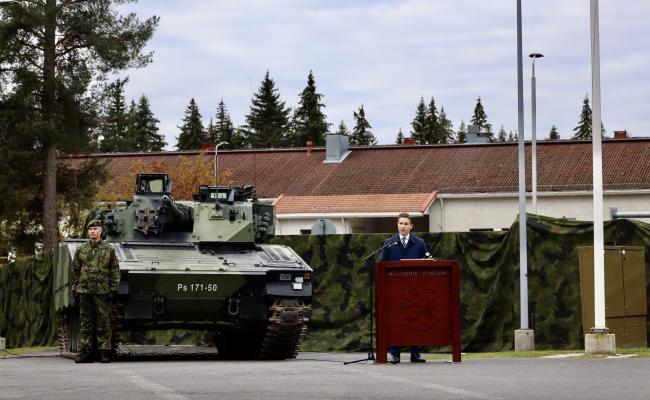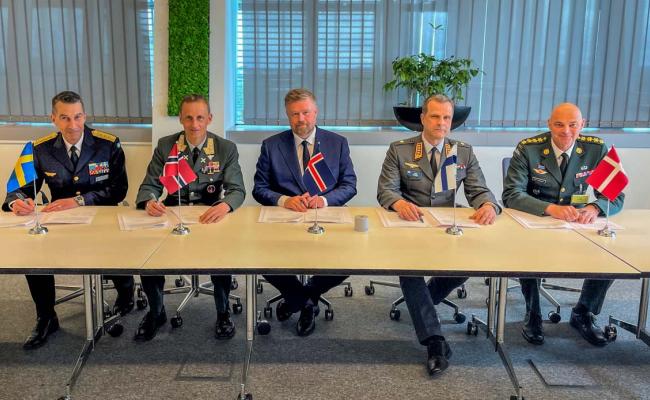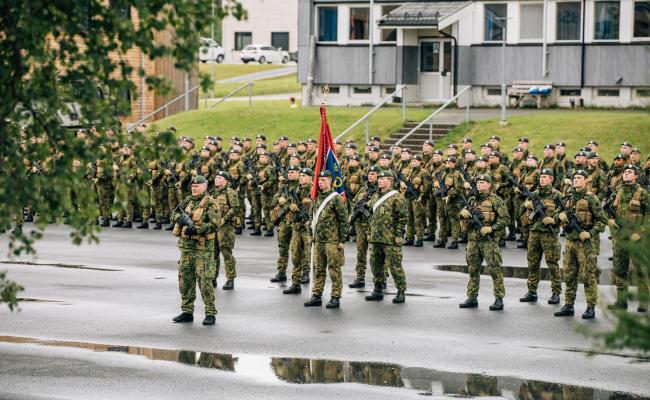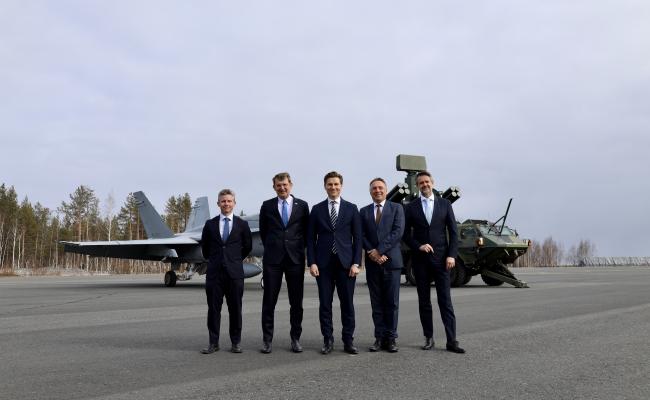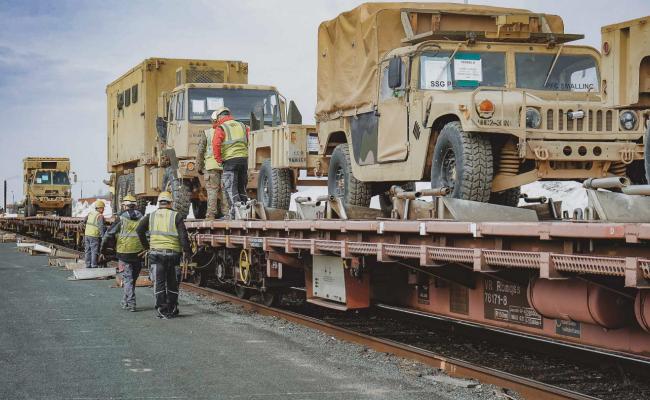Northern Nordic Military Leaders Gathered to Bolster Cooperation
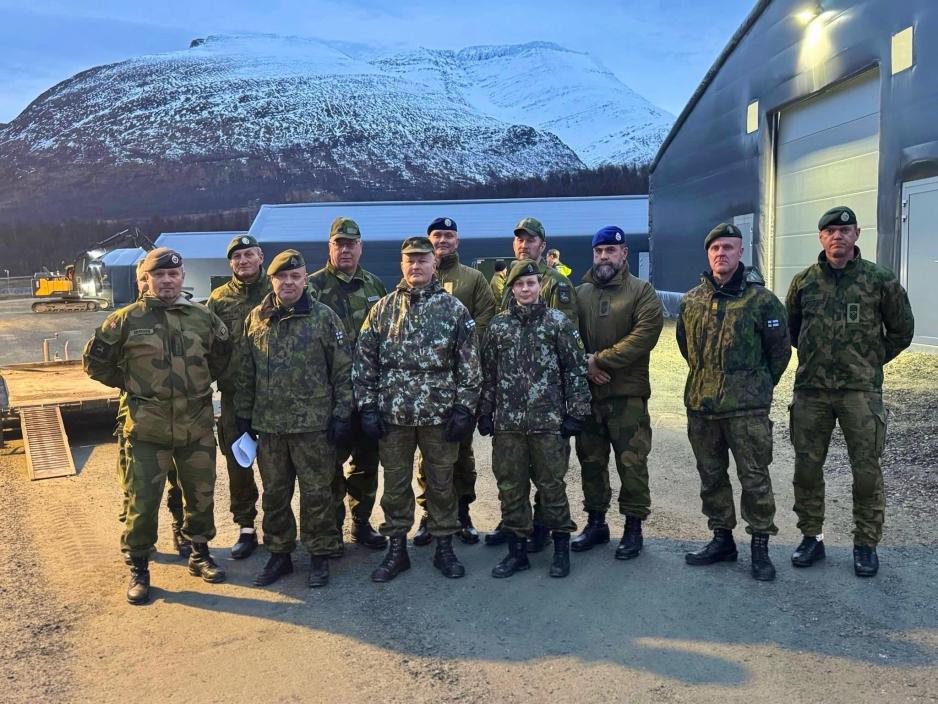
Commanders and command sergeant majors of the northern Nordic brigades and home guard forces at Camp Akkasæter in Troms County, Northern Norway. Their recent conference lasted three days. (Photo: the Norwegian Armed Forces)
The commanders of Norway, Finland and Sweden's northern brigades and home guard forces recently met in Troms, Northern Norway, to forge even closer ties. “This cooperation significantly improves our defense capabilities in the North,” says Terje Bruøygard, Commander of the Norwegian Brigade North.
Twice a year, the Nordic Region Commanders Conference takes place within the framework of the Nordic Defense Cooperation (NORDEFCO).
The conference brings together the commanders and command sergeant majors of the northern Nordic army and home guard units.
These are the Jaeger Brigade and the Kainuu Brigade in Northern Finland; the Norrbotten Brigade and the Northern Military District in Northern Sweden, as well as the Finnmark Brigade, Brigade North and the Nord-Hålogaland Home Guard District 16 in Northern Norway.
This autumn's conference was hosted by the Brigade North in Troms County, Northern Norway.
“If necessary, we will fight to defend the northern parts of Norway, Finland and Sweden. It is wise that we know each other well and cooperate closely in peacetime to achieve a high level of interoperability,” says the Commander of the Brigade North, Brigadier Terje Bruøygard, to High North News.

Commander of Brigade North, Brigadier Terje Bruøygard. Brigade North is the largest unit in the Norwegian Army and has its headquarters in Bardufoss, Troms County, Northern Norway. It consists of eight battalions and a military police company with locations in Troms, as well as in Østerdalen, Southeastern Norway. (Photo: Synne Nilsson/the Norwegian Armed Forces)
Joint situational awareness
Bruøygard emphasizes that this regular dialogue at the commander level, which is transformed into practical cooperation across the units, is of great importance.
“Before Finland and Sweden became members of NATO, it was difficult to share intelligence and operational plans due to national data classification. Now, the military cooperation between the brigades is borderless,” he says and continues:
“We can develop joint situational awareness and perception of the threat environment, as well as discuss how we can reinforce each other. This cooperation significantly improves our defense capabilities in the North.”
Exchange
The responsibility for hosting the Nordic Region Commanders Conference rotates so that the military leaders can develop knowledge about the way of doing things in the different countries and at the various units.
“Even something as simple as the conscription model differs greatly between Norway, Sweden and Finland. Training of corporals, non-commissioned officers, and commanders of platoons, companies, and battalions is also done differently," says Bruøygard.
"In addition, we have somewhat different equipment, varied procedures, and different languages. We get a little smarter every time we meet,” he adds.
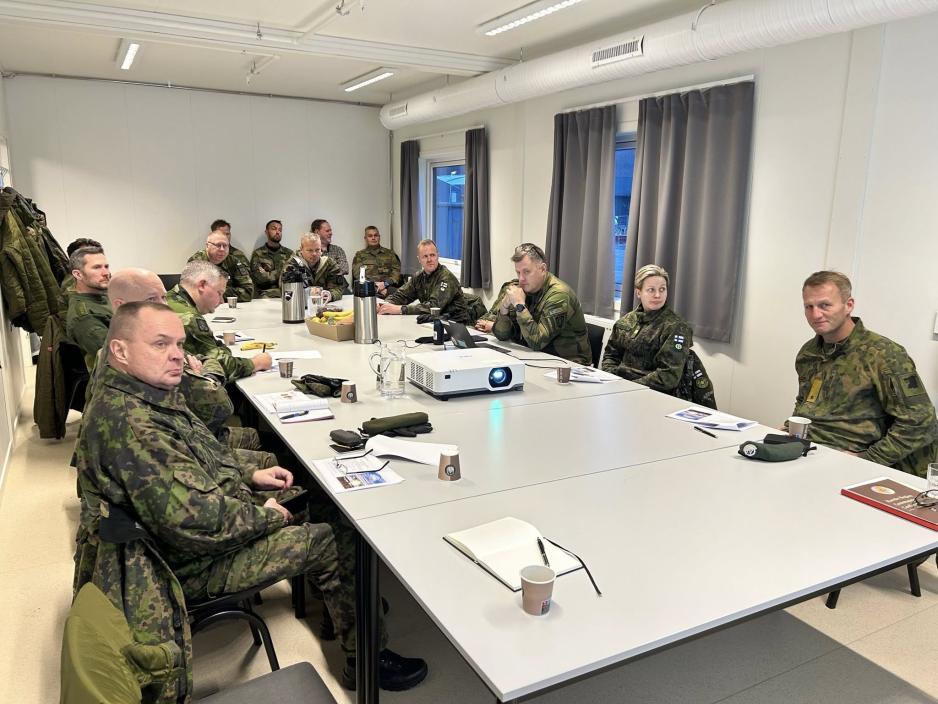
The Norwegian, Finnish and Swedish military leaders gathered around the table for discussions during the Nordic Region Commanders Conference. (Photo: Norwegian Armed Forces)
Learning points
The use of reservists and military technological developments are also very important topics, according the commander of Brigade North.
“Norway is now going to further develop or ‘rediscover’ the reservist system. In this context, we have much to learn, especially from the Finns, but also from the Swedes. This is something we talk about a lot. The same goes for the technological developments considering the war in Ukraine. Our common adversary is acquiring much knowledge that we must keep up with,” Bruøygard points out.
“Specifically, a central topic of discussion is how we should adapt to the drone threat. What does it mean for our own combat tactics? How should we approach a battlefield where it is almost impossible to hide and where drones can hit us in depth? In this area, we need to find countermeasures and we have made a good start on this in all three countries.”
Planning and the reception of allied forces
At the conference in Troms, NATO's updated operational plans were also central to the agenda.
“The alliance's new plans and our role within them are the subject of much discussion. The details are, of course, classified information. However, it is no secret that we are talking about this and that this is very important,” says the brigade commander and continues:
“In light of this, we have looked more closely at the ability to receive allied forces and that is why we visited Camp Akkasæter. Norway has come a long way in developing infrastructure for allied reinforcements. The Finns and Swedes find this very interesting.”

Camp Akkasæter at Blåtind firing and exercise range in Troms has been developed to facilitate allied training and exercises as well as allied reinforcement. The camp is due to be completed in 2026 and will have the capacity to house 1,200 people. (Photo: the Norwegian Armed Forces)
FLF Finland
The Finnish and Swedish interest in such infrastructure is not least connected with the development of NATO Forward Land Forces (FLF) in Northern Finland, notes Bruøygard.
The Jaeger Brigade will host this force, which will be led by Sweden.
“FLF Finland will include various participating nations. There will not necessarily be permanently stationed troops, but forces that will visit for training and exercises in a larger military unit under Swedish leadership,” says the Brigade North commander and continues:
“The structure is still in the making, but perhaps the British, Americans, Germans and Italians will come to Northern Finland and Northern Sweden and train together with the rest of us who are here in the High North, linked to NATO's regional planning.”
As of now, the UK, France, Norway, Denmark, Iceland, and most recently Italy have announced that they will contribute to the development of this forward presence in Finnish Lapland. Norway's contribution is still being clarified at a political level.
Also read (the article continues):
Command of large army units
“The FLF is also part of the new Allied footprint in Finland with the recently inaugurated NATO Multi-Corps Land Component Command Northwest in Mikkeli,” Bruøygard says and elaborates:
“Above brigades there are divisions and above divisions there are corps. What has now been established in Mikkeli is a multinational structure that can lead larger formations of divisions and corps with allied reinforcement.”
“We are talking about large army units here. Therefore, we brigade commanders have exchanged thoughts about how to lead large-scale operations. In other words: How should we exercise command and control on the new battlefield?”
Also read (the article continues):
Division operations
The aforementioned discussion is also related to structural developments in the Swedish and Norwegian armies.
“Sweden is establishing a division over its brigades. We in Norway are thinking about whether we should do the same as our army now actually has three brigades, with the new Finnmark Brigade and Brigade South. It 'smells' a bit like a division even though there is no ambition for such a development right now,” the Brigade North commander outlines.
“At the same time, it goes without saying that we must have the capacity and expertise to be able to carry out division operations. This means that above the level of us brigades, the Finnish, Swedish and Norwegian army commands also cooperate on how the brigades should be organized and led in both peace, crisis and war.”
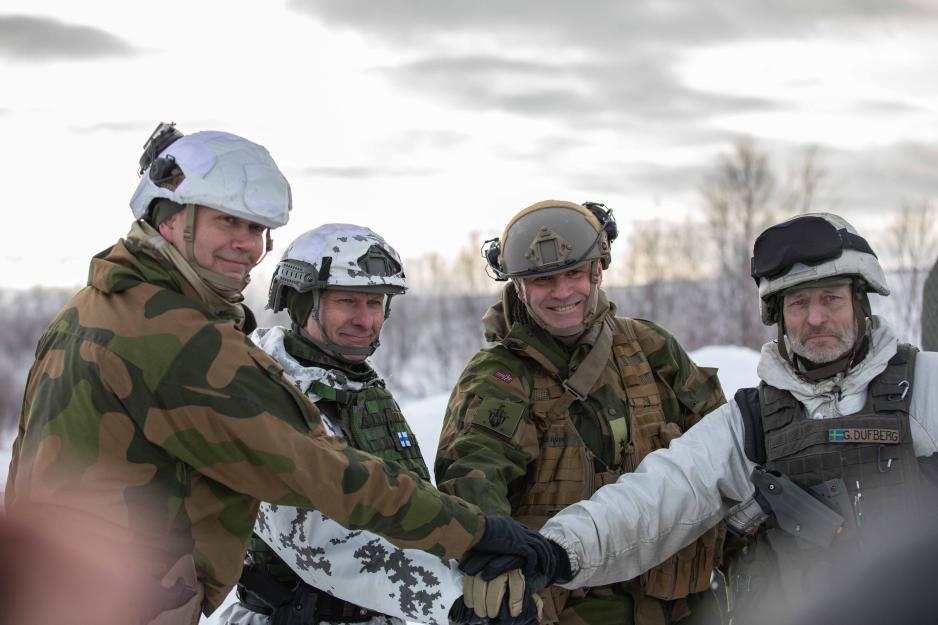
The Commander of Brigade North, Brigadier Terje Bruøygard (left), and the Chief of the Norwegian Army, Major General Lars Lervik (third from left), together with colleagues from Finland and Sweden during the large-scale exercise Nordic Response 2024. (Photo: Synne Nilsson/Norwegian Armed Forces)
Tangible outcomes
From top level to the very concrete: As indicated at the beginning, an important aspect of the Nordic Region Commanders Conference is that the commanders' dialogue is transformed into practical measures.
“The fact that we gather at the commander level is one thing, but we also establish working groups so that we have professionals who meet and connect our units more closely together. For example, we are working on coordinating our communication systems to achieve rapid information sharing,” says Bruøygard and continues:
“We are also working on developing a joint intelligence picture. In addition, we are looking at new opportunities for joint training and exercises as well as further exchange of experiences.”
Also read (the article continues):
"Strengthens the entire alliance"
At the joint northern Nordic meetings, many good points are made by competent groups, the brigade commander emphasizes.
“We believe that collaboration across what are NATO's presumptively best brigades to operate in this northern climate and landscape strengthens the defense of not only the Nordic region, but also the entire alliance.”
“Going forward, we will continue to concretize our cooperation in various areas so that we become increasingly interoperable and integrated. Among other things, we will develop the ability to use each other's weapons systems if necessary,” says Bruøygard.



